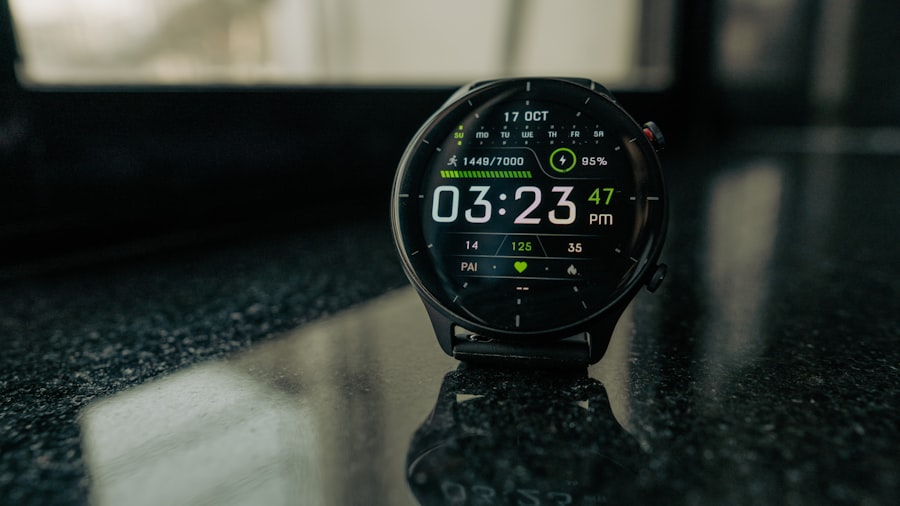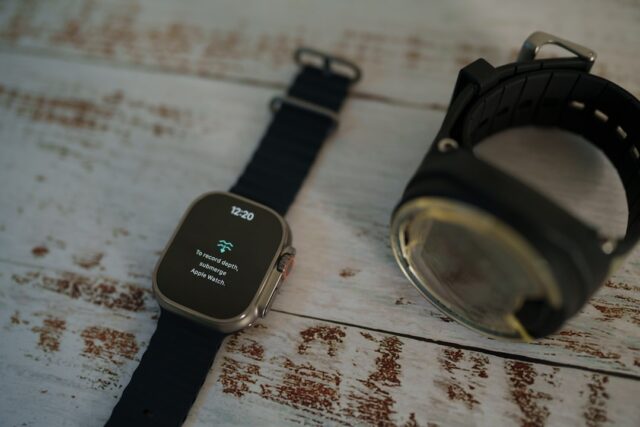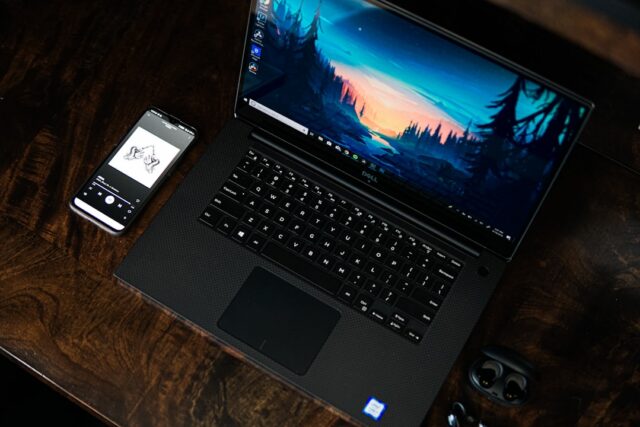In recent years, the intersection of technology and mental health has garnered significant attention, particularly with the advent of wearable gadgets. These devices, which range from smartwatches to fitness trackers, have evolved beyond their initial purpose of monitoring physical activity and health metrics. They now play a pivotal role in mental health management, offering users tools to track their emotional well-being, manage stress, and even receive real-time feedback on their mental state.
The integration of sensors and advanced algorithms allows these gadgets to collect data on physiological indicators such as heart rate variability, sleep patterns, and even skin conductance, which can be correlated with mental health conditions. The rise of wearable technology in mental health is not merely a trend; it reflects a broader shift towards personalized healthcare. As individuals become more proactive about their mental well-being, wearable gadgets provide an accessible means to monitor and improve mental health.
This democratization of mental health tools empowers users to take charge of their emotional states, fostering a sense of agency that is often lacking in traditional therapeutic settings. By leveraging technology, individuals can gain insights into their mental health patterns, enabling them to make informed decisions about their self-care and treatment options.
The Benefits of Wearable Gadgets for Mental Health
Wearable gadgets offer a multitude of benefits for individuals seeking to enhance their mental health. One of the most significant advantages is the ability to track and analyze data over time. For instance, devices equipped with heart rate monitors can help users identify patterns in their physiological responses to stressors.
By correlating spikes in heart rate with specific events or emotions, individuals can gain valuable insights into their triggers and develop coping strategies tailored to their unique experiences. This data-driven approach allows for a more nuanced understanding of one’s mental health, moving beyond anecdotal evidence to a more empirical basis for self-reflection. Moreover, many wearable gadgets come with built-in features designed to promote mindfulness and emotional regulation.
For example, some devices offer guided breathing exercises or meditation prompts that can be activated during moments of heightened anxiety or stress. These interventions can serve as immediate tools for users to ground themselves and regain control over their emotional states. The convenience of having such resources readily available on one’s wrist can significantly reduce barriers to accessing mental health support, particularly for those who may feel overwhelmed by traditional therapy settings or who lack access to professional help.
The Potential Drawbacks of Wearable Gadgets in Mental Health

Despite the numerous benefits associated with wearable gadgets in mental health, there are also potential drawbacks that warrant consideration. One significant concern is the risk of over-reliance on technology for emotional regulation. While these devices can provide valuable insights and tools, they may inadvertently lead users to neglect traditional therapeutic practices or support systems.
For instance, individuals might become so focused on tracking their metrics that they overlook the importance of interpersonal relationships or professional guidance in managing their mental health. This reliance on technology could create a false sense of security, where users believe they are adequately addressing their mental health needs without engaging in comprehensive care. Another potential drawback is the issue of data privacy and security.
Wearable gadgets collect sensitive information about users’ mental health and emotional states, raising concerns about how this data is stored, shared, and utilized. Instances of data breaches or unauthorized access to personal information can lead to significant distress for users who may feel vulnerable about sharing their mental health data. Furthermore, the commercialization of this data poses ethical questions regarding consent and ownership.
Users must navigate the complexities of trusting technology companies with their most intimate experiences while also considering the implications of data monetization in the realm of mental health.
Current Trends in Wearable Gadgets for Mental Health
| Wearable Gadget | Features | Benefits |
|---|---|---|
| Smartwatches | Heart rate monitoring, sleep tracking, stress level detection | Provides real-time data for managing stress and improving sleep |
| Brain-sensing Headbands | EEG monitoring, meditation guidance | Helps in monitoring brain activity and improving meditation practices |
| Activity Trackers | Step counting, physical activity monitoring | Encourages physical activity and helps in setting fitness goals |
| Emotion-sensing Wearables | Emotion recognition, mood tracking | Assists in understanding and managing emotions for better mental health |
The landscape of wearable gadgets for mental health is rapidly evolving, with several trends emerging that reflect advancements in technology and shifts in consumer preferences. One notable trend is the integration of artificial intelligence (AI) into wearable devices. AI algorithms can analyze user data in real-time, providing personalized feedback and recommendations based on individual patterns.
For example, some wearables can detect changes in mood or stress levels and suggest tailored interventions such as mindfulness exercises or relaxation techniques. This level of personalization enhances the user experience and increases the likelihood of effective self-management. Another trend is the growing emphasis on community and social connectivity within wearable platforms.
Many devices now incorporate features that allow users to connect with friends or support groups, fostering a sense of belonging and shared experience. This social aspect can be particularly beneficial for individuals struggling with isolation or loneliness, as it provides an avenue for connection and support beyond traditional therapy. By creating a network of users who can share insights and encouragement, wearable gadgets are transforming into tools not just for individual monitoring but also for collective mental health support.
The Future of Wearable Gadgets in Mental Health
Looking ahead, the future of wearable gadgets in mental health appears promising, with ongoing innovations poised to enhance their effectiveness and accessibility. One potential development is the incorporation of biometric sensors that go beyond traditional metrics like heart rate and sleep patterns. Emerging technologies may enable wearables to monitor additional physiological indicators such as cortisol levels or brainwave activity, providing a more comprehensive picture of an individual’s mental state.
This expanded capability could lead to more accurate assessments and interventions tailored to specific mental health conditions. Furthermore, as telehealth continues to gain traction, wearable gadgets may play an integral role in remote therapy sessions. Healthcare professionals could leverage real-time data from wearables during virtual consultations, allowing for more informed discussions about a patient’s progress and challenges.
This integration could bridge the gap between technology and traditional therapeutic practices, creating a holistic approach to mental health care that combines data-driven insights with human connection.
Ethical Considerations in the Use of Wearable Gadgets for Mental Health

The integration of wearable gadgets into mental health care raises several ethical considerations that must be addressed to ensure responsible use. One primary concern is informed consent; users must fully understand how their data will be collected, used, and shared before engaging with these devices. Transparency from manufacturers regarding data practices is essential to build trust with consumers who may be hesitant to share sensitive information about their mental health.
Additionally, there is a need for ethical guidelines surrounding the use of AI in mental health applications. As algorithms become more sophisticated in analyzing user data, questions arise about accountability and bias in decision-making processes. Ensuring that AI systems are designed with fairness and inclusivity in mind is crucial to prevent exacerbating existing disparities in mental health care access and outcomes.
Stakeholders must engage in ongoing discussions about the ethical implications of technology in mental health to navigate these challenges effectively.
The Role of Healthcare Professionals in Utilizing Wearable Gadgets for Mental Health
Healthcare professionals play a vital role in integrating wearable gadgets into mental health care practices. Their expertise is essential not only in guiding patients on how to use these devices effectively but also in interpreting the data generated by wearables. Clinicians can help patients understand what specific metrics mean in the context of their overall mental health and how they can leverage this information for self-improvement.
Moreover, healthcare providers can facilitate discussions around the limitations of wearable technology. While these devices offer valuable insights, they should not replace traditional therapeutic approaches or professional guidance. By emphasizing a balanced approach that incorporates both technology and human interaction, healthcare professionals can help patients navigate their mental health journeys more effectively.
This collaborative model fosters a supportive environment where patients feel empowered to utilize wearable gadgets as part of a broader strategy for managing their mental well-being.
The Impact of Wearable Gadgets on the Future of Mental Health
The impact of wearable gadgets on the future of mental health is profound and multifaceted. As technology continues to advance, these devices are likely to become increasingly sophisticated tools for monitoring and managing emotional well-being. The potential benefits—ranging from personalized insights to enhanced accessibility—are significant; however, they must be balanced against ethical considerations and potential drawbacks.
As society embraces this technological shift, it is crucial for stakeholders—including manufacturers, healthcare professionals, and users—to engage in ongoing dialogue about best practices for integrating wearable gadgets into mental health care. By fostering collaboration and prioritizing ethical considerations, we can harness the power of technology to create a more supportive landscape for mental health management that empowers individuals while ensuring their privacy and well-being are safeguarded.
FAQs
What are wearable gadgets for mental health monitoring?
Wearable gadgets for mental health monitoring are devices that can be worn on the body to track and monitor various aspects of mental health, such as stress levels, sleep patterns, and physical activity.
How do wearable gadgets for mental health monitoring work?
These gadgets typically use sensors to collect data on physiological and behavioral indicators, such as heart rate, skin conductance, and movement. This data is then analyzed to provide insights into the user’s mental health status.
What are the benefits of using wearable gadgets for mental health monitoring?
Wearable gadgets for mental health monitoring can provide individuals and healthcare professionals with valuable information about mental well-being, potentially enabling early intervention and personalized treatment plans.
What are some examples of wearable gadgets for mental health monitoring?
Examples of wearable gadgets for mental health monitoring include smartwatches, fitness trackers, and specialized devices designed specifically for mental health monitoring, such as biofeedback devices.
Are wearable gadgets for mental health monitoring accurate?
The accuracy of wearable gadgets for mental health monitoring can vary depending on the specific device and the metrics being measured. It’s important to consider the reliability and validity of the data collected.



MOST COMMENTED
Apps
10 Hidden Android Apps: Boost Productivity Instantly
Apps
Privacy-Focused Messaging Apps: A 2025 Comparison
Apps
Top Minimalist Apps for a Distraction-Free Life
Apps
Top Offline Apps for 2025: No Internet Needed
Gadget
The Battle of Wearables: Smart Rings vs. Smartwatches
Gadget
The Future of Mental Health: Wearable Gadgets on the Rise
Laptops
Top Laptops for Coding and Content Creation Under ₹70,000